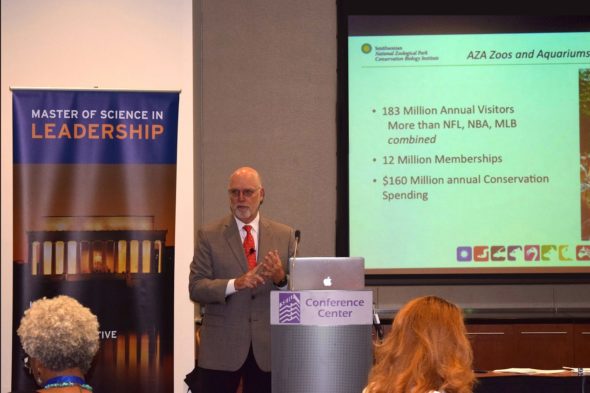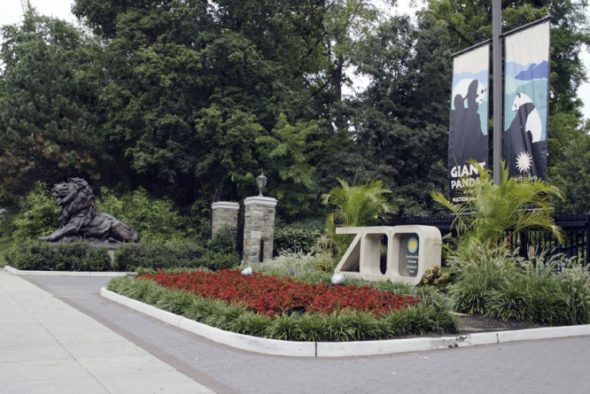Dennis Kelly, Director of the Smithsonian’s National Zoo in Washington, D.C., was a featured speaker during a recent Brookings Executive Education (BEE) course on Motivating People: Engaging Your Workforce. The two-day course provided participants with practical tools and knowledge to help them identify sources of motivation and strategies to maximize them.
Kelly currently oversees the 163-acre zoo facility in Rock Creek Park and the 3,200-acre Smithsonian Conservation and Biology Institute campus in Front Royal, Virginia. The zoo has more than 450 full-time staff, including keepers, curators and scientists, and an annual budget of approximately $51 million.
Kelly presented a case study that included research from Olin. “Motivating People: A Case Study of Workers with a Calling,” cited Stuart Bunderson’s research involving zookeepers who often feel their work is a calling, not just a job. Bunderson is Associate Dean and Director of Executive Programs at Olin. His research paper, “The Call of the Wild: Zookeepers, Callings, and the Double-edged Sword of Deeply Meaningful Work” was co-authored with Jeffery Thomson a professor at Brigham Young University, Marriott School of Business.
Bunderson’s study found “A sense of calling complicates the relationship between zookeepers and their work fostering a sense of . . . occupational importance on one hand, and unbending duty, personal sacrifice, and heightened vigilance on the other . . . A calling can be a painfully double-edged sword.”

Dennis Kelly at BEE
Reflecting on the 2009 study, Kelly stated, “It is great to have research to apply to real-time issues of safety and commitment. We were recently challenged with the consequences of the ‘doubled-edged sword’ when employee motivation and budget constraints collided.”
Specifically, Kelly discussed when animals are sick and need additional care. Dedicated zookeepers did not want to risk taking funding away from other areas in the zoo because of staffing needs, but they also did not want ailing animals to go unattended. When the budget was tight, staff attempted to work unaccounted hours to make sure the animals were taken care of, which creates a conflict of interest for management. In a profession where the employees are highly educated, notoriously underpaid, and yet so eager to work in the profession, they are accustomed to making sacrifices for the sake of the animals.
When employers are faced with the challenge of cultivating and sustaining high levels of motivation and engagement, Kelly recommended the following strategies:
- Decision-making: Inclusion vs. Direction
- Recognize the extraordinary need for communication and involvement
- Vigilance to personal safety
- Protection from exploitation (employees and animals)
Zoo images: Smithsonian



